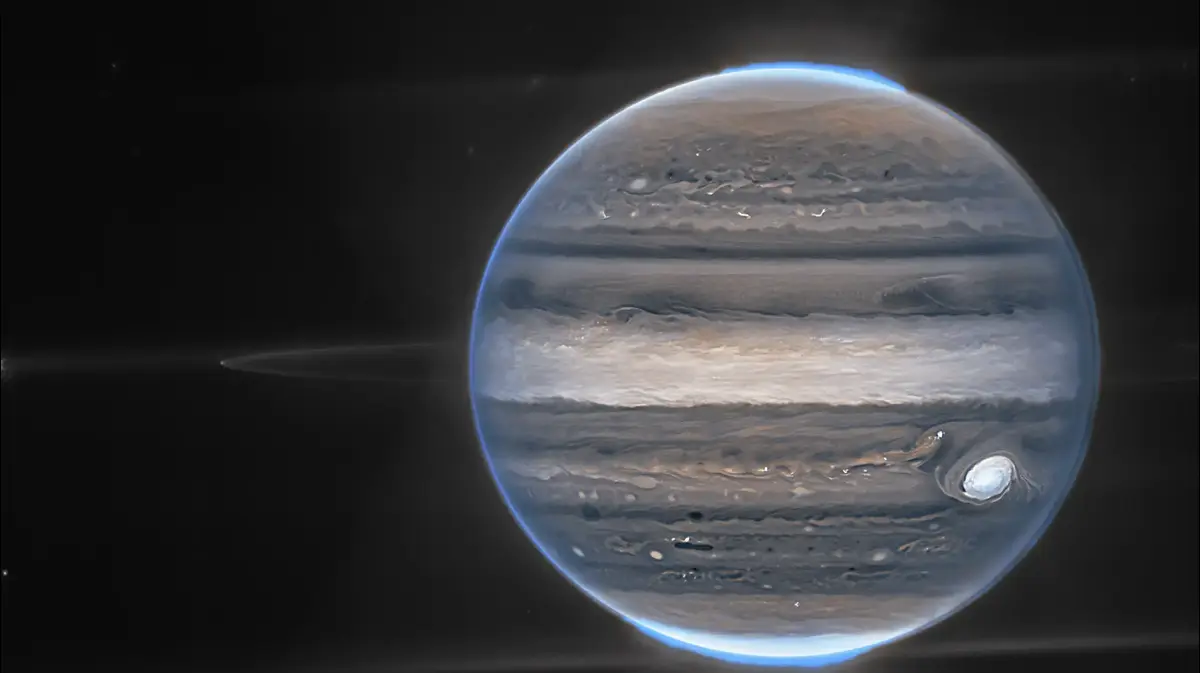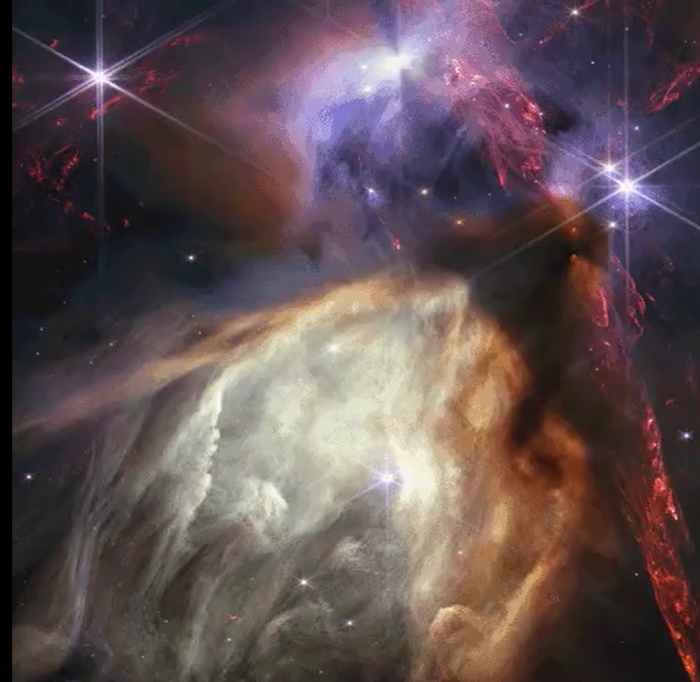Closer and more detailed than ever: James Webb photographed Jupiter
Northern and southern lights, luminous rings and even a moon: the expensive and advanced space telescope documented the largest planet in the solar system.
"We didn't really expect it to be this good"
Yanon ben Shoshan
22/08/2022
Monday, August 22, 2022, 10:07 p.m. Updated: 10:36 p.m.
Share on Facebook
Share on WhatsApp
Share on Twitter
Share by email
Share in general
Comments
Comments
Jupiter as photographed by James Webb (photo: NASA, ESA)
From a distance of 1.5 million km from Earth:
The American space agency NASA and the European Space Agency (ESA) published this evening (Monday) a new image of the planet Jupiter, taken by the James Webb Space Telescope.
In the image, which was digitally colored and taken on July 27, you can see the outline of the largest planet in the solar system, with the lights of both the northern and southern lights appearing around it.
In addition, it is possible to notice strong winds and huge storms that take place in the star.
This is a photograph with unprecedented detail - compared to other photographs taken in the past near the Earth.
"We didn't really expect it to be that good, to be honest," said astronomer Imeka de Pater of the University of California, Berkeley.
"It's amazing that we can see details of Jupiter along with its rings, tiny satellites and even galaxies in one image," added de Pater.
Jupiter is a gas giant and most of its mass is hydrogen and helium.
Like other gaseous planets in the solar system, Jupiter has a system of rings and a system of moons.
James Webb (Photo: NASA)
James Webb was launched in December 2021, and is already at the Lagrange point L2, a gravitationally stable point on the Earth-Sun axis about 1.5 million km away from us, which allows it to "hover" in place with a minimal investment of fuel. The planning and development of J James Webb lasted more than 25 years, with an investment of about 10 billion dollars.
In July, Webb went to work and provided some spectacular images of the universe with a sharpness that had not been seen before: of a cluster of galaxies at a great distance from us, of the largest and brightest radiation nebula in the sky, located 7,600 light-years from us, of WASP-96b, a gas giant orbiting a star 1,150 light-years away, the Southern Ring Nebula, and the Stefan Quintet - a compact galactic cluster, located 290 million light-years from us, and first discovered in 1787.
good to know (in advance)
The facial treatment revolution: artificial intelligence and RF technology in a home device
Served on behalf of B Cure Laser
technology
Tags
Jupiter
Planet Jupiter





/cloudfront-eu-central-1.images.arcpublishing.com/prisa/PA5TT2ZCYBDNLEAREMUPESRVOM.jpg)


